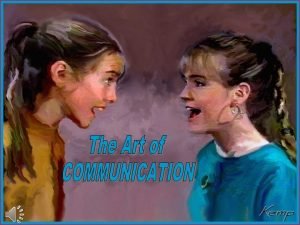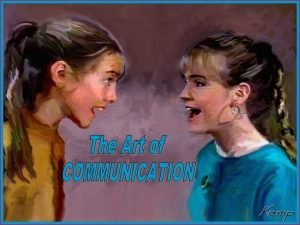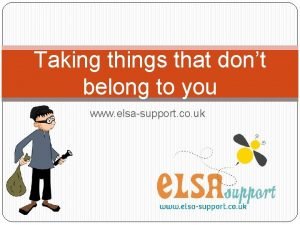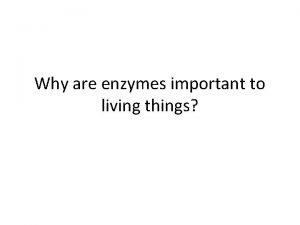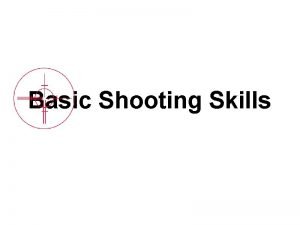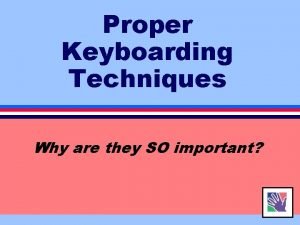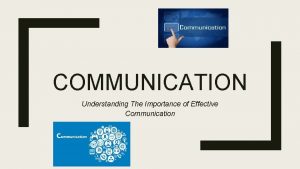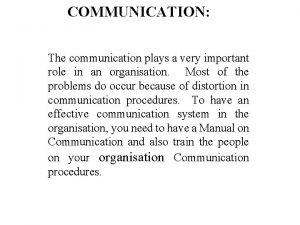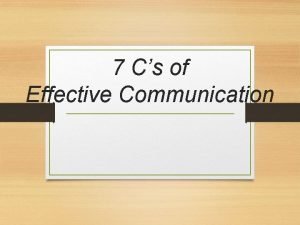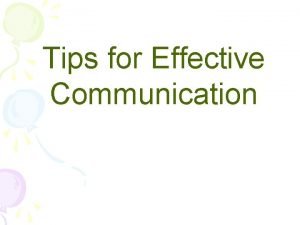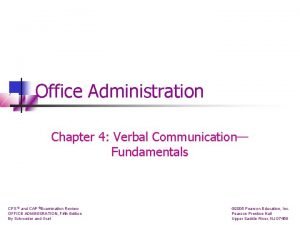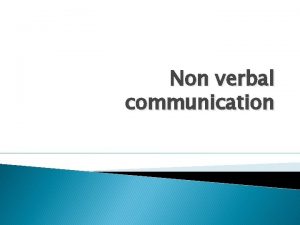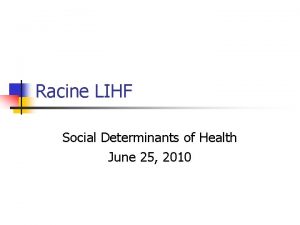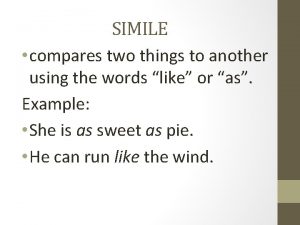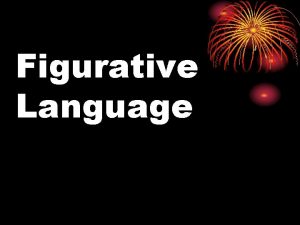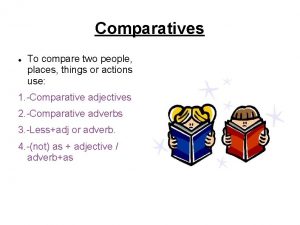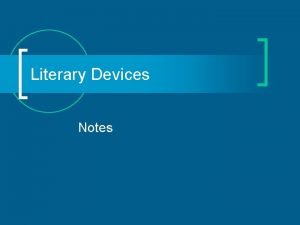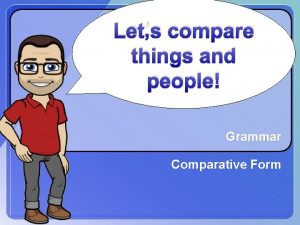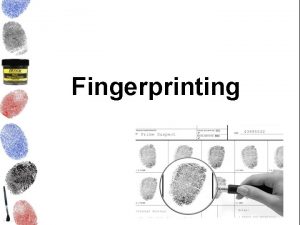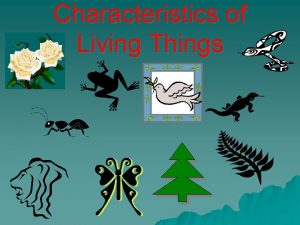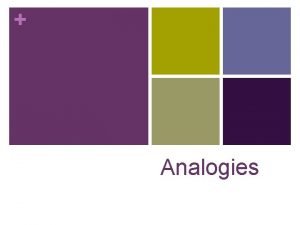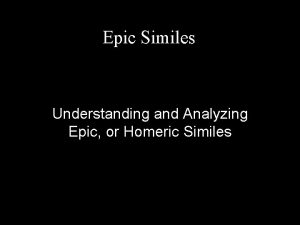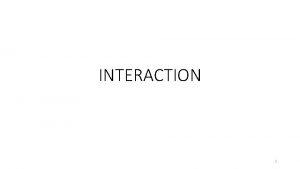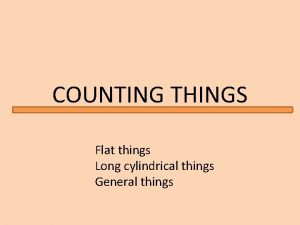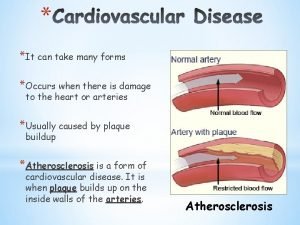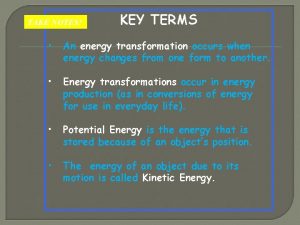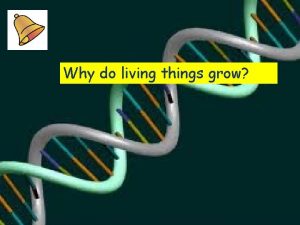Good communication occurs when two important things take




























































- Slides: 60


Good communication occurs when two important things take place. The expression of a thought or feeling and the effective listening of that expressed concept. Establishing fulfilling interpersonal relationships is enhanced by mastering the communication process. Talking is easy; communication requires greater skill. It demands that we listen and speak skillfully, not just talk mindlessly. We must talk “to” each other instead of “at” each other. Developing good communication habits takes some conscious attention, but once they become familiar, can be the secret to improving relationships, increasing productivity and advancing careers.

This model of the communication process outlines the individual concepts we need to consider in communicating our message to others. Source. . . As the source of the message, you need to be clear about why you're communicating, and what you want to communicate. You also need to be confident that the information you're communicating is useful and accurate. Think about your manner of speaking. Don’t offer too much information too fast. Remember, less is sometimes more. Your personal strengths or weaknesses in vocabulary, pronunciation, grammar usage, and/or body language may affect your ability to communicate.

Message. . . The message is the information that you want to communicate. If your message is too lengthy, A person who communicates by disorganized, or swearing appears ignorant, rude, illcontains errors, you tempered, and difficult. Intense and can expect the relentless swearing constitutes verbal message to be abuse. Swearing around children, misunderstood and who parrot what they hear, is misinterpreted. Use irresponsible. of poor verbal and body language can A message can be distorted by also confuse the emotions. Use care in communicating message. with fearful, angry, or frustrated people.

Encoding. . . Encoding is the process of transferring the information you want to communicate into a form that can be sent and correctly decoded at the other end. Your success in encoding depends partly on your ability to convey information clearly and simply, but also on your ability to anticipate and eliminate sources of confusion. For example…make sure you know your audience. The meaning of some words and gestures vary among cultures. A “thumbs up” indicates approval in the United States, but is obscene in the Middle East. An “Aok” here means “money” in Japan. How about the use of “LOL” or “IRS” in written communication. Does your audience understand abbreviations?

Channel. . . Messages are conveyed through channels, with verbal face-to-face meetings, via a third person delivering a message, telephone and videoconferencing; and written letters, emails, memos, text- messages, and reports. Different channels have different strengths and weaknesses. For example, it's not particularly effective to give a long list of directions verbally, while you'll quickly cause problems if you criticize someone or deliver bad news by email.

Decoding. . . Just as successful encoding is a skill, so is successful decoding (involving, for example, taking the time to read a message For example, answer this question: carefully, or listen “Is there any federal law about a man actively to it. ) Once marrying his widow’s sister? ” again, confusion can arise from errors in this (if you decoded it correctly, you would have answered… “There is no law… to have a widow, process. This is he’d have to be dead. ”) particularly the case if How about this one? … your doctor the decoder doesn't walked back into your examination have enough knowledge room and announced “It appears to understand the you’ve suffered a deep musculature message or interprets it contusion. ” incorrectly. (if you could decode the medical jargon, you’d know that you have a bad bruise)…

Is this guy kidding? I’ve been planning my retirement for over a year already! They couldn’t pay me enough to come back! Receiver. . . Finally your message is received members of your audience. You have in mind the actions or reactions you hope your message will get from this audience. However, each of these individuals enters into the communication process with ideas and feelings that will undoubtedly influence their understanding of your message, and their response. The new company vice president on the right is delivering the news… ”John, I’ve convinced the Board to make you chairman of the Public Relations department next year! It comes with nearly 20% more money than you’re making this year!” What kind of response is he expecting?

Feedback or response. . . Your audience will provide you with feedback, verbal and nonverbal reactions to your communicated message. Pay close attention to this feedback, as it is the only thing that allows you to be confident that your audience has understood your message. If you find that there has been a misunderstanding, at least you have the opportunity to send the message a second time. Now, does anyone have questions?

Context. . . The situation in which your message is delivered is the context. This may include the surrounding environment or broader culture (i. e. corporate culture, international cultures, intimate moment, etc. ). Consider these common sayings and the context in which they might be said… “The higher your score… “The less I know, the better!” the better off I am. ” We sure wouldn’t want Does this apply in the context of to be talking about taking the ACT test? blood pressure numbers!

The message you send can invite communication. Examples of Door Openers: "I'm interested in what you are saying. " "What do you think? " "Would you like to share more about that? " "That's a good question. " "I don't know, but I'll find out" "Do you know what that means? " "That sounds important to you. " "Do you want to talk about it? "

The message you send can discourage communication. Examples of Door Slammers: "You are too young to understand. " "If you say that again, I'll. . . " "That's none of your business. " "I don't care what your friends are doing!" "We'll talk about that when you need to know. " "That's just for boys/girls" "Why are you asking me that? " "You don't need to know about that. " "Don't come to me if you mess up. "

Avoid expressing only negative feelings. If you need to offer criticism, try to preface it with some type of positive statement. Measure the success of your communication by the outcomes you get. Close the communication gap between your intentions and your behavior. There is a general rule: We measure I don’t want to alarm you by ourselves by our intentions; keeping you here in the others measure us by our hospital another night, but I behavior. State intentions do want to run one more test. clearly and up front; ask for Is that alright with you? feedback.

Avoid using body language that contradicts your words — for example smiling when irritated; laughing when worried. Earn the right to be heard. Active listening establishes a "psychological truth" that states: When you sincerely try to understand another person's point of view (not necessarily agree with it), then he/she becomes psychologically obligated to try to understand your point of view. Your acknowledgement of what the speaker had to say obligates them to hear what you have to say.

Do not communicate to manipulate: Sometimes we communicate solely for the purpose of getting what we want, when we want it, whether the other person is able to give it or not. Sulking, pouting, threatening, or cajoling (repeated gentle attempts; wheedling) to make the other person feel bad is temporarily effective but has terrible long-term effects on relationships. Do not communicate to deceive: Lies, exaggerations, games, and general deceptions cause confusion and pain in relationships. Be honest and forthright; this builds integrity.

Do not communicate with double messages: Saying one thing and doing another -- are confusing. A person’s actions are more aligned with the truth than their words. If their words contradict what they're doing, ignore what is being said.

One of the first things to remember about electronic messages is that, even when speaking face-to-face, only 7% of the message we intend to communicate is in the words we use, no matter how carefully chosen. This is why email messages get interpreted in all kinds of unintended ways – because when we receive it, we apply our own filters and interpret it in our own way. There is no voice reflection. No intonation. One of the ways we interpret information is very personally. We read things into messages that may not be there or were not intended because of our personal perspective and biases.

Email should NOT be used for harsh messages or bad news. Humor, and sarcasm in particular, do not translate well in email form. Avoid expressing your emotions in email. Once you “send”…it’s too late to change your mind. As human beings though, face-to-face is still, and may always be, the most effective means for communicating information and building relationships. Think of email as an enhancement tool to effective communication.

Communication is more than “talking” and “waiting to talk”. It must involve “listening”. There are many benefits to listening, but underlying most of them is the fact that when we listen, we get to learn something we may not have known—we rarely learn anything by talking. How good are your active listening skills? If you take 12 apples from 21 apples, how many apples do you have? 12 apples… that’s how many you took.

There are two type of listening… Passive Listening: Used when no feedback response is intended or needed, such as when listening to the radio or watching television. Active Listening: Used to actively provide verbal and nonverbal feedback to the speaker about your understanding of what is being communicated. Active listening skills are necessary to carry on a successful conversation.

Face the speaker. Sit up straight or lean forward slightly, showing an active body state… to show your attentiveness through body language. Maintain eye contact, to the degree that you all remain comfortable. Minimize external distractions. Turn off the TV. Put down your book or magazine, and ask the speaker and other listeners to do the same.

Respond appropriately with verbal and nonverbal responses to show that you understand. Murmur ("uh-huh" and "um-hmm") and nod. Raise your eyebrows. Say words such as "Really, " "Interesting, " as well as more direct prompts: "What did you do then? " and "What did she say? " Would you please put down your paper and listen to me? Focus solely on what the speaker is saying. Try not to think about what you are going to say next. The conversation will follow a logical flow after the speaker makes her point.

Keep an open mind. Wait until the speaker is finished before deciding that you disagree. Try not to make assumptions about what the speaker is thinking. Avoid formulating your rebuttal while the speaker is still talking. Even if the speaker is launching a complaint against you, wait until they finish to defend yourself. The speaker will feel as though their point had been made. They won't feel the need to repeat it, and you'll know the whole argument before you respond. Research shows that, on average, we can hear four times faster than we can talk, so we have the ability to sort ideas as they come in…and be ready for more.

Avoid letting the speaker know how you handled a similar situation. Unless they specifically ask for advice, assume they just need to talk it out.

Engage yourself. Ask questions for clarification (gaining a better understanding), but, once again, wait until the speaker has finished. That way, you won't interrupt their train of thought. After you ask questions, confirm that you have heard and understand. Do this by repeating, paraphrasing, or summarizing their point to make sure you didn't misunderstand. Start with: "So you're saying…"

Practice comprehension. Occasionally read or listen to difficult-to-understand materials to keep your brain sharp. Avoid unconscious barriers to good listening. Such barriers may include a desire to be right, a fear of another’s influence, self-absorption with our own ideas, or apprehension about our ability to express ourselves lest we take our mind off our own thoughts.

? ? ? ? ? Questioning comes at both ends of the communication model. Sometimes the “source” poses a question to stimulate conversation or get information. Other times the question is asked as feedback from the receiver, asking for clarification. There are several types of questions: ?

? ? ? Information Questions: How, What, Where, When, and Why? Precision Questions: 'What exactly? ', or 'How much? ', or 'Always? ' Powerful Questions: 'What's stopping you? ' or 'What are you afraid might happen if you. . . ? ' ? Reflective Questions: 'So you're saying that. . . ? ‘ ? ? Probing Questions: ‘What do you mean by that? ' 'Could you explain that further? ' 'Have you thought of. . ? ' 'What else has happened? ' 'And then what happened? ' ?

Difference of opinions is normal. How you resolve those differences is called “conflict resolution”. Before you introduce information that is not in agreement with what the other person said, you must use a "Transition Sentence" or risk starting an argument. A transition sentence provides support for the person's point of view without necessarily agreeing with it, and at the same time, makes them receptive to a different point of view.

I believe you have a valid point about getting rid of that substandard housing, but you’ve got to find those people another place to live first! I’ve thought about this at length. I believe our first priority is to build alternative housing, and then tear down the existing homes. There are two parts to a transition sentence: 1. Statement that supports the current view (without agreeing) 2. Announcement that new information is coming

Make an appointment to talk: (a) for a certain time and place, (b) for a certain issue. Chose a time when you will not be distracted by other family members, guests or television and when you both are relatively relaxed. Sit face to face and keep eye contact at the same level. Children do not understand disagreements between their parents. Do not argue in front of them. No degree of physical threats or violence allowed!

Present your argument sensibly. Know what you want, and why you want it. If you don’t have a goal, you won’t know when you’ve achieved it. Talk about the way you feel, and the degree to which you feel it. Present your feeling first, and then the solution you have in mind. Look for common ground instead of focusing solely on differences. Keep the fight relevant. Only discuss the issue of concern. Stick to this issue. Fight about no more than two related issues at a time.

Make statements that start with “I”; avoid statements that start with “you”. Do not bring up past history or grudges. Do not call names or pin on labels; do not place blame (do you want to be right or do you want to be happy? ) or use foul language or sarcasm. Don’t over react. Be proportional in your responses; consider the importance of the issue.

Don't take another person's reaction or anger personally, even if they lash out at you in what seems a personal manner. Another person's mood or response is more likely about fear or frustration than it is about you as an individual. You don't have to have all the answers. It's OK to say, "I don't know. “

Allow for the person you’re disagreeing with to retreat with dignity. How an argument ends is important. Recognize when a compromise or peace symbol is being extended, and give the person you’re talking to a facesaving way out of the disagreement. There is a time limit. Often a complicated issue cannot be resolved in one setting. At the very least, take a break to calm down and reorganize your thoughts.

Remember that what someone says and what we hear can be amazingly different! Our personal filters, assumptions, judgments, and beliefs can distort what we hear.

NONVERBAL COMMUNICATION includes facial expressions, tones of voice, gestures, eye contact, spatial arrangements (where the participants are in relation to each other), patterns of touch, expressive movement, cultural differences, and other "nonverbal" acts. Being non-verbal is a channel of communication. One research study by UCLA psychology professor Albert Mehrabian found that 55% of meaning in an interaction comes from facial and body language and 38% comes from vocal inflection. Only 7% of an interaction's meaning is derived from the words themselves.

Proximity: Our culture dictates a comfortable distance for interaction with people. Look for signals of discomfort caused by invading others’ space, such as rocking, legs swinging, tapping, and gaze aversion. Very close proximity Eye contact: Eye contact indicates confrontation is an important channel of and may cause anxiety. communication, and helps regulate the flow of communication. It increases the speaker's credibility, and conveys interest, concern, and warmth. If the eye contact is too direct for too long, it can become confrontational or accusing.

Facial expressions: Smiling is a powerful cue, and the person that smiles is perceived as more likable, friendly, warm and approachable. Smiling is often contagious. Can you read meaning into the different facial expressions shown here? What is each person thinking or feeling?

Gestures: Gestures communicate loud and clear! If you fail to gesture while speaking, you may be perceived as boring, stiff and unanimated. Gestures such as head nods indicate that you are listening. Gestures do not mean the same thing in all cultures.

Posture and body orientation: You communicate numerous messages by the way you walk, talk, stand sit. Standing erect, but not rigid, and leaning slightly forward communicates that you are approachable, receptive and friendly. Interpersonal closeness results when you and the person you’re speaking to face each other. Speaking or listening with your face or gaze turned away communicates dislike, disinterest, or boredom. Humor: Laughter releases stress and tension.

Paralinguistics: This facet of nonverbal communication includes such vocal elements as tone, pitch (frequency of a sound wave), rhythm, timbre (TIM-ber or TAMber; quality of sound), loudness, and inflection. Learn to vary these six elements of your voice to avoid the image of dullness and maintain your listeners attention. Silence is effective - and much under-used. People are nervous in silence and try to fill it. You can use this if you are seeking information. You ask the question, you lean back, the person answers, you nod and smile, you keep quiet, and the person continues with more detail, simply to fill your silence.

A great deal of research has been done in the fields of psychology and sociology, studying the nonverbal messages of body language and facial expressions. As you evaluate the following pictures, you should gain some knowledge of how this research can be applied to real -life situations.

You are trying to persuade a gentleman to be on your side in a dispute. While you are presenting your argument, you see their Adam’s apple “jump”. Do you believe they are convinced to be on your side or the other side of the issue? The conspicuous up-and-down motion of the Adam's apple is an unconscious sign of emotional anxiety, embarrassment, stress, or strong disagreement. You step into an elevator with several other people. The lady beside you has a blank expression on her face. Is she bored? Would this be a good time to strike up a conversation? A neutral, relaxed, seemingly "expressionless" face reflects a mood of calmness. It also sends a strong emotional message of “do not disturb”.

You are telling your aunt that you borrowed her tent and lantern for your weekend campout. Look at the expression on her face. Is she pleased that you’re going to tell her about your weekend plans for fun, or irritated that you borrowed her things? Teeth that come together in a “biting” position indicate concealed irritation or anxiety; it may also be a sign of insincerity in a smile. You are telling your mom about your weekend plans. She seems to be blinking a lot more than usual. Is she happy or worried? The normal, resting blink rate of a human being is 20 closures per minute, with the average blink lasting one quarter of a second (Karson 1992). Significantly faster rates may reflect emotional stress. She’s probably not happy.

This little boy told the little girl that he got a 97% on his spelling test today. Looking at her body language, is she telling him “I don’t care if you did better than I did!” OR is she telling him “I got a 99%!” Lifting the chin, leaning the head backward, and looking down the nose are used throughout the world as nonverbal signs of superiority, arrogance, and disdain (Eibl-Eibesfeldt 1970, Hass 1970).

The coach just told this quarterback player to sit on the bench for a minute. Is this player thinking “I know I can throw the next pass right on the target…I’ve just got to concentrate!” OR is he thinking “I can’t do anything right tonight; I might as well head to the locker room. ” Rotating eyeballs in their sockets to a downward position, bowing or tilting the head forward so that the eyes face the ground/floor conveys a defeated attitude or one of guilt, shame, or submissiveness. It also indicates distortion of the truth. True statements are normally given with a confident, face-to-face or level gaze, which may be held longer than three seconds.

This man works for an advertising agency. His boss just gave him the assignment to create an ad campaign for a major client. Judging by his posture, does this man have more questions to ask OR is he ready to carry out the assignment? Hands-on-hips shows that the body is prepared to "take steps" to perform, take part in, or take charge of an event, activity, or work assignment. This posture is indicative of a person poised to step forward to carry out a superior’s order, to carry out discipline, to threaten a subordinate, or to defend against others.

This woman’s boyfriend just suggested that he spend the night at her house. Judging by this head tilt, is she thinking “I think that would be alright” OR is she thinking “not tonight sweetie; I want the marriage license first. ” The head-side-tilt may be used to show friendliness, to show coyness such as in a courtship, and to strike a submissive pose. She’s going to let him spend the night. She may also use this pose to respond to “cute” things, such as kittens and babies.

While your client is testifying on the witness stand, you are watching this man on the jury. Suddenly, he presses his lips together firmly. Judging from this expression, does he think your client is telling the truth or lying? Neither. A sudden lip-compression may signal the onset of anger, disliking, grief, sadness, or uncertainty. Barely noticeable lip-clenching may signal unvoiced opposition or disagreement The prisoner just told this attorney “I didn’t do it”. Look at her lips. Is she thinking “I believe you” OR “I think you’re lying”. The message send by puckering the lips is “I disagree”. It is a look of disagreement, scheming, or calculated thought. She thinks her client is lying.

Former President Richard Nixon used this hand gesture while giving a speech. What was the more likely topic of his speech? Was he apologizing OR was he being very confident in his position? While speaking or listening to another's remarks, palmdown gestures show confidence, assertiveness, and dominance. Accompanied by aggressive, palm-down "beating" signs, our ideas, opinions, and remarks appear stronger and more convincing. Your child’s teacher looks like this as she is discussing your child’s attitude in class. Is she saying “Look, this is your problem; I’m just his teacher” OR is she saying “Listen, I think we can work on this together”? Uplifted palms suggest a vulnerable or nonaggressive pose which appeals to listeners as allies, rather than as rivals or foes. Throughout the world, palm-up cues reflect moods of congeniality, humility, and uncertainty. Palms up and held out to an opponent is a gesture of peace or compromise.

Little Suzy sticks her tongue out while playing with this toy. What is most likely going through her mind? Is she thinking “I can make my train go very fast…see? ” OR “I’m not sure what sound the train makes”. The tongue-show is a universal mood sign of unspoken disagreement, disbelief, disliking, displeasure, or uncertainty. While this student takes a test, his eyes move to the right or left, but they don’t seem to be focusing on anything. Is he trying to disguise cheating? Involuntary eye movements to the right or left signal information processing, reflection, and thought. This student may simply be thinking over the question and trying to remember the answer.

You’ve been watching this state senator during the legislative debate. Several times he has brought his hands up to his face, and rubs his lips with his fingertips. Is he stressed out? OR Is he bored? We unconsciously touch our bodies when emotions run high to comfort, relieve, or release stress. Lips are favorite places for fingertips to land deliver reassuring body contact. Holding your arm, massaging a hand, scratching, rubbing, or pinching the skin signal an increase in anxiety and possibly deception, disagreement, fear, or uncertainty.

The boy on the left has grabbed the shirt of his friend in anger. Look at his angled position, and decide what will probably happen next. Is he more likely to hit his friend or run away? Squaring the torso is a preparation for battle; angling away is in preparation for flight. The boy on the left will probably take off rather than continue the agression.

You are presenting your ideas about the city park at a town meeting. One of the people in the crowd holds their hand up like this one to the left. If you call on them to speak, will they most likely agree or disagree with your ideas? Clenched fists signal an aroused emotional state, as in anger, excitement (e. g. , to cheer on a team), or fear. In a business meeting, unconscious fisting is a visible sign of anxiety or unvoiced disagreement.

This couple at the restaurant seem to be having a deep discussion. Her eyes appear moist. He is swallowing quite often. Do you believe he is telling her why they should no longer be married? OR Are they just relaxing after a good meal? There are many involuntary nonverbal signs after having eaten a satisfying meal, such as constricted pupils, moistened eyes, slowed breathing rate, and mouthwatering secretions accompanied by increased swallowing. Other signs of relaxation are leaning forward or leaning backward… a rest and digest pose.

We show agreement, liking, and loyalty by aligning our upper body with that of the person we respect the most. It is often possible to identify the most powerful person (i. e. , the highest status or the boss) seated at a conference table by the greater number of torsos aimed in his or her direction. While the less influential may glance freely about and turn heads toward colleagues as they speak, their torsos remain loyally oriented to the individual they most admire. Study the picture below carefully. Who’s the boss? The man holding his eyeglasses in his right hand is the boss; in fact, this boss happens to be the late President Ronald Reagan.

When former football player and actor O. J. Simpson was on trial for the murder of his ex-wife and her boyfriend, he was often seen crossing his arms loosely like the man in the top picture. Other times he elevated his crossed arms up on the table, with his elbows projecting away from his body like the man in the bottom picture. Psychologists observed him during that trial, looking for ‘tells’… gestures that would indicate the truth… whether “he agrees with what this witness is saying” or “he disagrees with what this witness is saying”. How do you believe he crossed his arms when he thought the witness was lying?

Folding the arms over the lower chest or upper abdomen with one or both hands in contact with the bicep muscles is a common resting position and indicates relaxation and/or agreement. If the arms and elbows are pulled in very tightly against the torso, it indicates acute nervousness. Held less tightly against the body, such as crossed and elevated on a table with elbows projecting away from the body indicates disagreement. By the way, while accusers were testifying about finding bloody gloves on his property where he threw them after the murders, he sat with his arms crossed like the man in the upper left picture. So, did he AGREE or DISAGREE with what they were saying?

 Good communication occurs when
Good communication occurs when Good communication occurs when
Good communication occurs when Good thoughts good words good deeds meaning
Good thoughts good words good deeds meaning C. good evening.
C. good evening. Good afternoon teacher
Good afternoon teacher You are good you are good when there's nothing good in me
You are good you are good when there's nothing good in me Good afternoon students
Good afternoon students Take a bus or take a train
Take a bus or take a train Newspaper article format
Newspaper article format From most important to least important in writing
From most important to least important in writing Least important to most important
Least important to most important Taking something that doesn't belong to you
Taking something that doesn't belong to you Why is water important to living things
Why is water important to living things Summary of act 4 and 5 romeo and juliet
Summary of act 4 and 5 romeo and juliet Most important things in life essay
Most important things in life essay How are enzymes important to living things
How are enzymes important to living things Difference between living and non living organisms
Difference between living and non living organisms Looking at living things
Looking at living things What is the importance of marksmanship
What is the importance of marksmanship Good posture at the steering wheel is important because
Good posture at the steering wheel is important because 7 proper keyboarding techniques
7 proper keyboarding techniques Items that distort or prevent communication
Items that distort or prevent communication Slidetodoc.com
Slidetodoc.com Communication plays a very important role in
Communication plays a very important role in Completeness in communication meaning
Completeness in communication meaning Body langyage
Body langyage Role of verbal communication
Role of verbal communication Personal factors affecting communication
Personal factors affecting communication Importance of paralanguage
Importance of paralanguage What people do in ramadan
What people do in ramadan Things fall apart essay thesis
Things fall apart essay thesis He has filled the hungry with good things
He has filled the hungry with good things Why would humans be a good index fossil
Why would humans be a good index fossil Three good things
Three good things Adelson's checkerboard
Adelson's checkerboard Things that are both good and bad
Things that are both good and bad What are the two basic requirements for a healthy scalp
What are the two basic requirements for a healthy scalp Two important kinds of metaergs are
Two important kinds of metaergs are What two important events happen at frightful’s nest?
What two important events happen at frightful’s nest? What are the two basic requirements for a healthy scalp?
What are the two basic requirements for a healthy scalp? Unified multi tier wot architecture
Unified multi tier wot architecture Contrastive structure asl example
Contrastive structure asl example What two things do tree rings indicate
What two things do tree rings indicate A comparison between two things using like or as
A comparison between two things using like or as Whats the definition of simile
Whats the definition of simile Comparing two things using like or as
Comparing two things using like or as Figurative language comparing two things
Figurative language comparing two things Personification in shall i compare thee to a summer's day
Personification in shall i compare thee to a summer's day Comparatives places
Comparatives places Comparing literary device
Comparing literary device Let's compare things
Let's compare things Study of fingerprints is known as
Study of fingerprints is known as What two things determine the strength of gravity
What two things determine the strength of gravity Comparing things without using like or as
Comparing things without using like or as Two characteristics of living things
Two characteristics of living things In your notebook write the
In your notebook write the Epic smile definition
Epic smile definition Mood of poems
Mood of poems There are two things that are infinite
There are two things that are infinite Good morning ladies and gentlemen
Good morning ladies and gentlemen Excellent very good good fair poor scale
Excellent very good good fair poor scale
